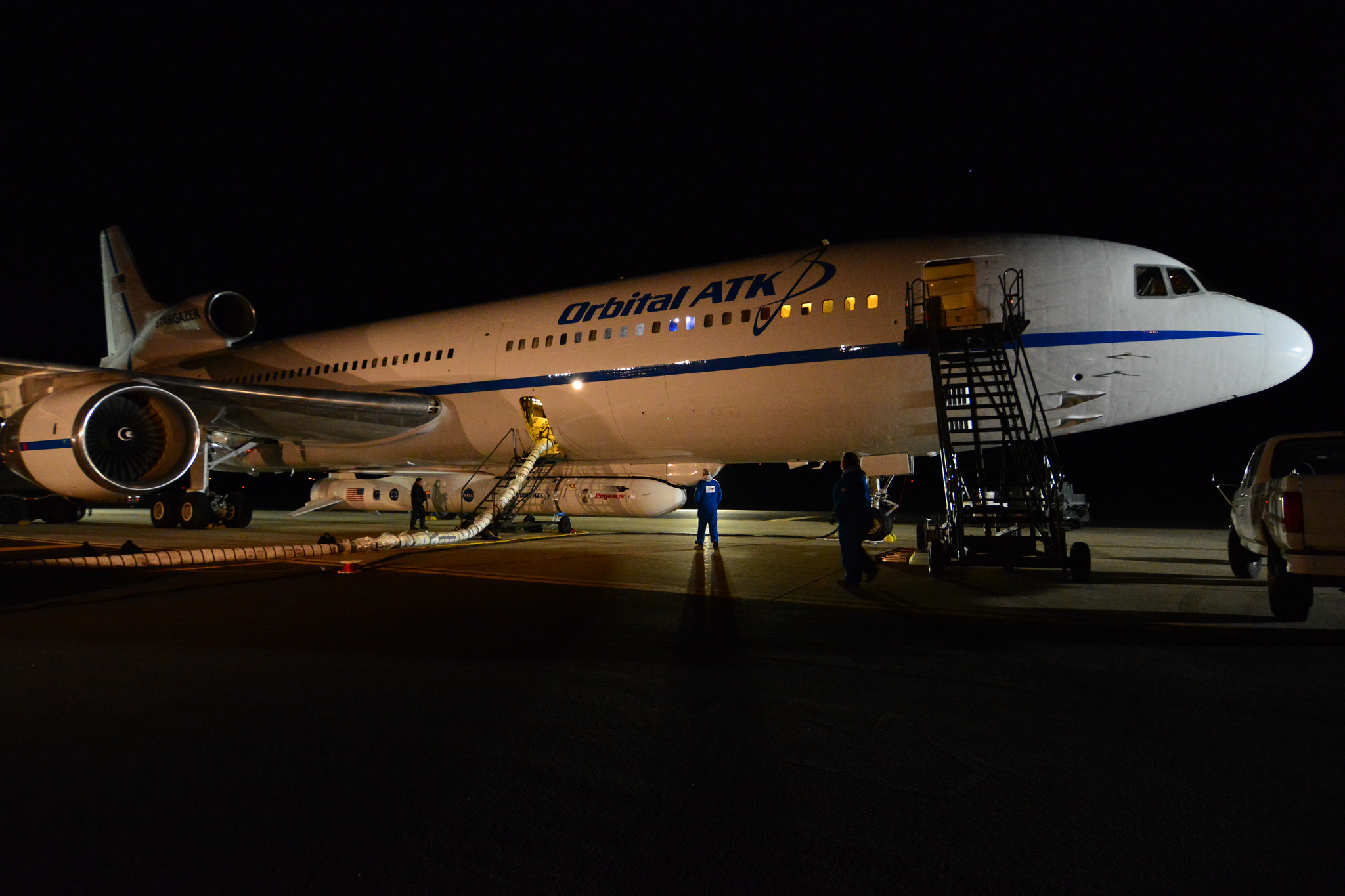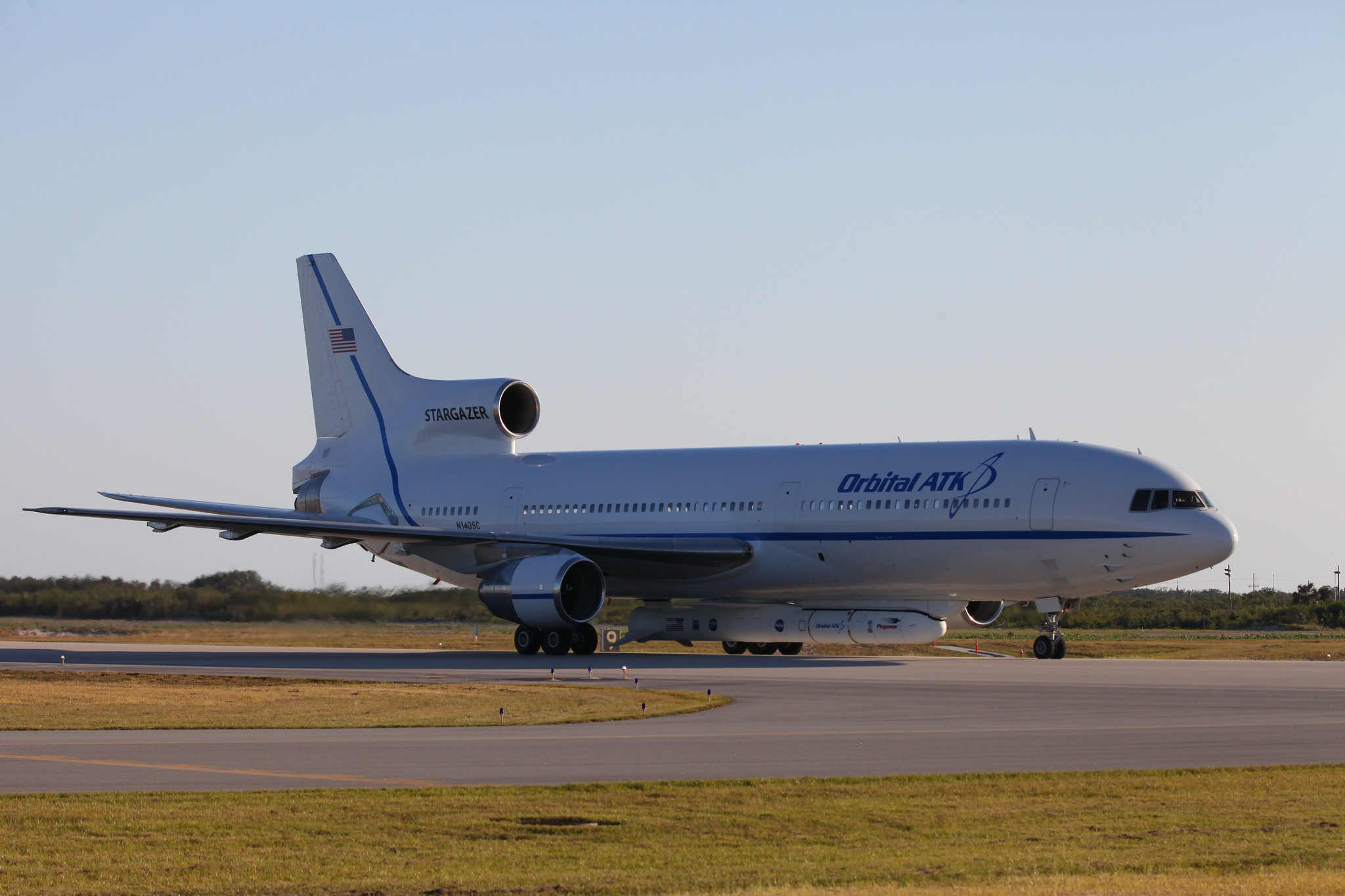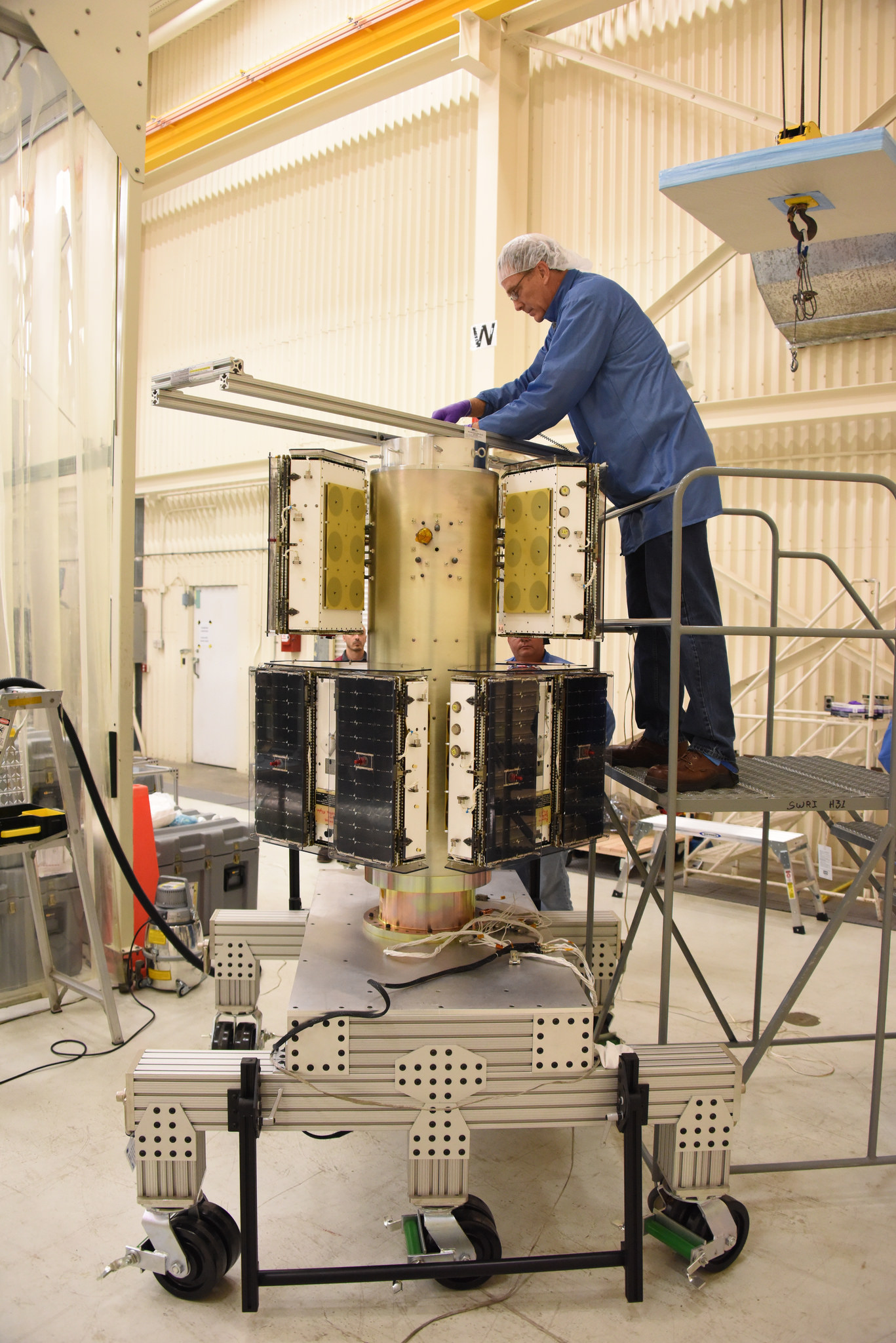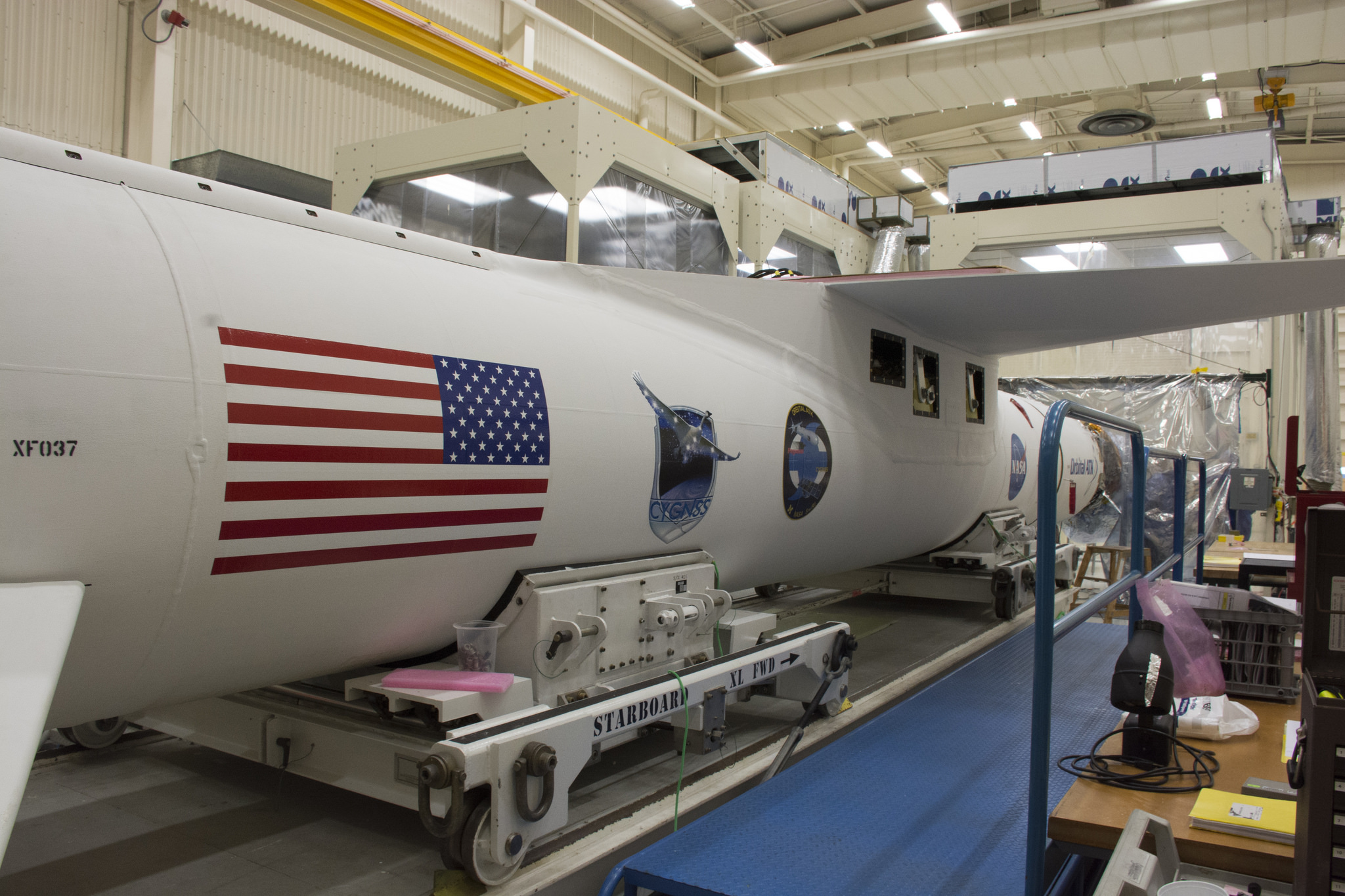NASA is preparing to launch a constellation of small satellites designed to aid weather forecasters in understanding and predicting hurricane intensity.
The eight observatories comprising the Cyclone Global Navigation Satellite System, or CYGNSS, will be delivered to Earth orbit by an Orbital ATK Pegasus XL rocket. The Pegasus XL and its microsatellite payload will be air-launched from the company’s modified L-1011 aircraft, nicknamed Stargazer, after taking off from the “Skid Strip” runway at Cape Canaveral Air Force Station in Florida. Launch is planned for Dec. 12 at 8:24 a.m. EST.
The CYGNSS mission’s eight identical microsatellites will team up with the Global Positioning System (GPS) constellation to measure wind speeds over Earth’s oceans and air-sea interactions, information expected to help scientists better understand tropical cyclones, ultimately leading to improved hurricane intensity forecasts.
To that end, CYGNSS will focus its attentions on the tropics, taking measurements where hurricanes form — including Hurricane Matthew, which affected Florida in October.
“Forecasting capabilities are going to be greatly increased,” NASA Launch Manager Tim Dunn said of CYGNSS. “As a Floridian, I will really appreciate that, certainly based on what we had to do this fall with Hurricane Matthew.”
This will be the first launch of a Pegasus XL launch vehicle from Kennedy in more than a decade, with such launches typically taking places from Vandenberg Air Force Base in California or the Reagan Test Range on the Kwajalein Atoll. “Because it’s heading to the ‘hurricane corridor,’ we had to launch from Florida,” explained Aly Mendoza-Hill, CYGNSS mission manager for NASA’s Launch Services Program, or LSP. Based at NASA’s Kennedy Space Center in Florida, LSP is responsible for spacecraft to launch vehicle integration and launch management.
The Space Physics Research Laboratory at the University of Michigan College of Engineering in Ann Arbor leads overall mission execution in partnership with the Southwest Research Institute in San Antonio, Texas. The Climate and Space Sciences and Engineering Department at the University of Michigan leads the science investigation, and the Earth Science Division of NASA’s Science Mission Directorate oversees the mission.
“Launch Services has been working with the CYGNSS team for about three years,” Mendoza-Hill said. “We have a whole team that has helped the launch vehicle and the spacecraft come together.”
The CYGNSS satellites and Pegasus XL rocket went through most of their prelaunch preparations in Orbital ATK’s facility at Vandenberg. The rocket arrived there in April 2016 and the satellites followed in September. Following rocket assembly and checkout, the eight observatories were mated to their deployment module and tested. Finally the CYGNSS payload was encapsulated in the rocket’s protective payload fairing, and the vehicle was attached to the Stargazer aircraft.
In an ironic twist, Hurricane Matthew sideswiped Kennedy Space Center and Cape Canaveral Air Force Station in early October. Forecast to make landfall on Florida’s Space Coast as a Category 4 storm, Matthew’s intensity decreased and its path wobbled slightly east of predictions. It moved past the spaceport on the morning of Oct. 7 as a still-powerful Category 3 hurricane.
Although the CYGNSS payload, Pegasus XL rocket and Stargazer aircraft were safe in California at the time, the storm still impacted the launch date.
“We were originally going to launch CYGNSS in the November timeframe, but as fate would have it, Hurricane Matthew had other things to say about the Eastern Range launch schedule, pushing us into December,” Dunn said. “So it’s appropriate for CYGNSS that we’re launching a little bit later — because of a hurricane.”
The Stargazer aircraft made the cross-country flight to Florida on Friday, Dec. 2, touching down on the Skid Strip in the afternoon with the Pegasus XL rocket already secured to its underside. Following their arrival, the spacecraft, vehicle, aircraft underwent several days of testing to ensure they are all ready for the flight ahead.
Early Monday morning, the Stargazer will take off from the Skid Strip and carry the Pegasus XL rocket aloft to a designated point. From there, the rocket is dropped, and after a short freefall, it launches horizontally in midair as its first engine burn begins.
“A launch from a Pegasus is very unique,” Mendoza said-Hill. “The plane flies at about 39,000 feet, then the rocket is released. Five seconds later, it ignites and leaves the atmosphere.”
The CYGNSS satellites are expected to be in orbit with their solar arrays deployed within about 15 minutes of launch, with solar array deployment about 10 minutes after each separation, setting the stage for a two-year mission to improve hurricane forecasts that in turn could protect lives and property in coastal communities.



























